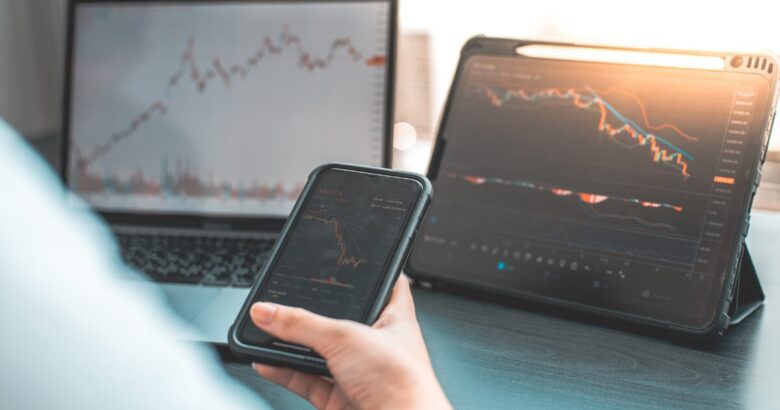Index investing in stocks has become increasingly popular in recent years,
MSCI All Country World Index (ACWI) and the S&P 500 is increasing.
Using the Geometric Brownian Motion (GBM) Model, one of the stock price forecasting models,
the future value of an index can be predicted
based on the historical average annual return and risk.
However, the prediction by the Geometric Brownian Motion Model is
based on the assumption that the average annual return and risk
will be the same in the future,
there is no guarantee that these will remain the same in the future.
If you want to check the expected return, please refer to the following.
Expected Return Calculation for GBM
Usage
Check the Average Annual Return and Risk of the index you wish to check and
enter it in the text box.
If you want to check the return when leveraged,
enter the multiple in the Leverage text box.
The Mode and Median graphs of the probability distribution
of expected returns for each elapsed year will be displayed or updated.
To display the 95% confidence interval of the probability distribution of expected returns,
click on the “show 95% confidence interval” checkbox.
If both the mode and the median are increasing,
you can expect to see increasing returns when investing for the long term.
For reference, below are the average annual returns and risks of the major indices.
| Return (%) | Risk (%) | Leverage (times) | |
|---|---|---|---|
| MSCI ACWI (All Country World Index) | 8.99 (Last 10 years) | 14.74 (Last 10 years) | 1.0 |
| S&P500 | 9.79 (Last 10 years) | 15.13 (Last 10 years) | 1.0 |
| NASDAQ100 | 17.91 (Last 10 years) | 18.8% (Last 10 years) | 1.0 |
| NASDAQ100 2times | 17.91 (Last 10 years) | 18.8% (Last 10 years) | 2.0 |
Expected Return Formula for GBM
Without Leverage
In the model of stock price prediction by the Geometric Brownian Motion,
the stock price \( S \) is assumed to have an initial value of 1,
the following the Geometric Brownian Motion equations are assumed to follow.
\[ \mathrm{d} S = \mu S \mathrm{d} t + \sigma S \mathrm{d} B \]
Where,
\( \mathrm{d} S \) is the incremental stock price
\( \mu \) is the average annual return
\( \sigma \) is risk (also called volatility or standard deviation)
\( \mathrm{d} B \) is the increment of the Wiener process (random increase or decrease in the stock price)
In this case, after time T has elapsed,
the probability \( f(x) \) that the stock price will be \( x \) after time \( T \) is expressed as follows
\[ f(x) = \frac{1}{ x \sqrt{2 \pi \sigma ^2 T}} \exp \left\{ – \frac{ \left\{ \log x – \left( \mu – \frac{\sigma ^2 }{2} \right) T \right\} ^2 }{2 \sigma ^2 T} \right\} \]
Mode and Median of this probability distribution (probability density function) \( f(x) \) are expressed as follows
\[ Mode = \exp \left( \mu – \frac{3}{2} \sigma ^2 \right) T \]
\[ Median = \exp \left( \mu – \frac{1}{2} \sigma ^2 \right) T \]
In addition, the 95% confidence intervals are as follows
\[ \exp \left\{ \left( \mu – \frac{1}{2} \sigma ^2 \right) T – 1.96 \sigma \sqrt{T} \right\} < S < \exp \left\{ \left( \mu – \frac{1}{2} \sigma ^2 \right) T + 1.96 \sigma \sqrt{T} \right\} \]
The above mode, median, and 95% confidence interval are used in this page’s calculation.
With Leverage
When considering leverage in the Geometric Brownian Motion Model,
because leverage L is applied to the average annual return and risk,
the average annual return \( \mu \) and risk \( \sigma \) are
\( L \mu \) and \( L \sigma \) , respectively.
In the leveraged case, Mode and Median are as follows.
\[ Mode = \exp \left( L \mu – \frac{3}{2} L^2 \sigma ^2 \right) T \]
\[ Median = \exp \left( L \mu – \frac{1}{2} L^2 \sigma ^2 \right) T \]
In addition, the 95% confidence intervals are as follows
\[ \exp \left\{ \left( L \mu – \frac{1}{2} L^2 \sigma ^2 \right) T – 1.96 L \sigma \sqrt{T} \right\} < S < \exp \left\{ \left( L \mu – \frac{1}{2} L^2 \sigma ^2 \right) T + 1.96 L \sigma \sqrt{T} \right\} \]


